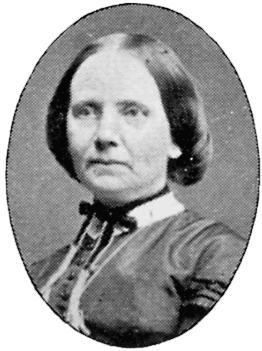Frukosten (Breakfast)
Amalia Lindegren, 1866 – A Genre Painting of Childhood Simplicity
In Frukosten (Breakfast), painted in 1866, Swedish artist Amalia Lindegren turns our gaze toward a moment of quiet delight—a child’s breakfast, tenderly lit and gently observed. Lindegren, known for her empathetic portrayals of children and domestic life, captures here the charm of ordinary beginnings, where innocence and stillness hold the viewer in their soft embrace.
The Scene Before Us
A young girl sits barefoot on a wooden floor, cradling a bowl of porridge in her lap. Her blouse has slipped slightly from her shoulder, not in neglect but in the casual ease of comfort. She looks directly at us—not startled, not shy, but aware. There’s warmth in her expression, a secret calm as if breakfast were not just a meal, but a ritual of quiet joy.
To her side, a small toy cart and tangled ribbon suggest play was paused. A modest table beside her holds a cloth, a spoon, and a doll tucked among folds of fabric. This world is small, but complete. And in it, nothing is missing.
The Deeper Meaning
There’s a grace in how Lindegren treats the child—not as a symbol or ideal, but as a being in her own moment. The painting doesn’t try to dramatize poverty or elevate simplicity into sentiment. Instead, it honors the humble truth of everyday life. The bare floor, the clay bowl, the loose strands of hair—all are part of a rhythm that feels familiar and timeless.
What glows is not the light, but the feeling of presence. We do not interrupt the child; we are simply invited to witness her as she is. That is Lindegren’s gift—to let a scene speak gently and truly.
A Moment Caught in Time
In the mid-19th century, genre paintings like this one reminded viewers that beauty lived not only in grandeur, but in daily rituals: a meal, a glance, a pause between play. Frukosten is not a painting about childhood; it is a painting that is childhood—curious, still, slightly mischievous, and deeply sincere.
The girl may finish her breakfast, rise, and return to her toy. But this moment remains, warm as morning light on worn wooden planks.
About Artist

Amalia Euphrosyne Lindegren (May 22, 1814 – December 27, 1891) was a celebrated Swedish painter known for her nuanced genre scenes and portraits. Born in Stockholm, she faced early tragedy losing her mother at a young age and was raised by the wife of her alleged biological father. Lindegren was one of the first women admitted to the Royal Swedish Academy of Arts (1856), and traveled extensively for her studies, including important periods in Paris, Munich, and Rome.
Artist Style and Movement
Lindegren is associated with the Düsseldorf school of painting, known for its detailed, narrative style and sentimental themes. Influenced by masters such as Adolph Tidemand, Hans Gude, and Per Nordenberg, her work often portrayed the everyday life and folk culture of Sweden, especially scenes from the Dalarna region. Her paintings frequently depict children and melancholic domestic moments, reflecting personal themes related to her childhood and Swedish peasant life with sensitivity and realism.
Artwork Profile / Notable Works
- Frukosten (Breakfast): This genre painting captures an intimate domestic scene featuring family members engaged around the table. It is celebrated for its warm portrayal of everyday life and fine attention to detail, embodying Lindegren’s talent for capturing quiet moments and human emotion.
- The Final Rest of The Little One (Lillans sista bädd): A poignant and well-known work showing a grieving family beside a child’s deathbed, exhibited internationally in Paris, Philadelphia, and Chicago.
- Sad Little Girls and Peasant Women: Numerous paintings inspired by Swedish folk life and the rural environment of Dalarna, often portraying the emotional depth of childhood and labor.
- Portraits of Queen Louise of the Netherlands and Contemporary Figures: Lindegren gained recognition for her compelling and accurate portraiture, becoming one of Sweden’s leading portrait painters.
Amalia Lindegren’s work resonates for its intimate exploration of Swedish life, childhood innocence, and emotional depth, achieved through meticulous technique and heartfelt storytelling. Her pioneering role as a female artist in the 19th century and her contributions to genre painting have left a lasting legacy in Swedish art history, reflecting both personal experience and broader social themes of her time.



